Jun 14, 2009
The Climate Caper
By Viv Forbes, The Climate Coalition
Another book written by a senior Australian Scientist, Garth Paltridge, is about to published by the same people who published Ian Plimer’s best seller “Heaven and Earth”.
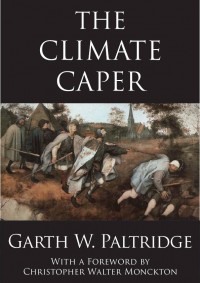
This is what the publisher has to say: “So you think the theory of disastrous climate change has been proved! You believe that scientists are united in their efforts to force the nations of the world to reduce their carbon emissions! You imagine perhaps that scientists are far too professional to overstate their case!
Maybe we should all think again. In his book The Climate Caper, with a light touch and nicely readable manner, Professor Paltridge shows that the case for action against climate change is not nearly so certain as is presented to politicians and the public. He leads us through the massive uncertainties which are inherently part of the ‘climate modelling process’; he examines the even greater uncertainties associated with economic forecasts of climatic doom; and he discusses in detail the conscious and sub-conscious forces operating to ensure that scepticism within the scientific community is kept from the public eye.
I have not yet read “The Climate Caper” but Ray Evans has, and had this to say:
“Having read the manuscript I can endorse this book without reservation. It is written by a scientist who was at the top of the scientific establishment in Australia, and who saw at first hand the intellectual corruption which went hand in hand with government funding of science “research”. “The book is written in a whimsical style, reminiscent of P G Wodehouse, and is difficult to put down.”
Emeritus Professor Garth Paltridge is an atmospheric physicist and was a Chief Research Scientist with the CSIRO Division of Atmospheric Research before taking up positions in Tasmania as Director of the Institute of Antarctic and Southern Ocean Studies and CEO of the Antarctic Cooperative Research Centre. His research ranged from the optimum design of plants to the economics of climate forecasting. He is best known internationally for work on atmospheric radiation and the theoretical basis of climate. He is a fellow of the Australian Academy of Science.
He was in industry for a while as Director of the Environmental Executive of the Institute of Petroleum. He spent various separate years overseas in postings concerned with research or research administration - in the UK, Geneva, New Mexico, Colorado and Washington D.C. In Geneva he was involved in the early development of the World Climate Program. In Washington he was with the US National Climate Program Office at the time of the establishment of the IPCC.
To order go here.
Jun 11, 2009
Canada frosts the most widespread in recent memory
By Rod Nickel, Reuters
WINNIPEG, Manitoba (Reuters) - The multiple frosts that have blanketed Western Canada in the last week are the most widespread in the top canola-growing province of Saskatchewan in at least five years, the Canola Council of Canada said on Tuesday.
Two overnight frosts last week have already resulted in some Saskatchewan farmers reseeding their canola, a Canadian variant of rapeseed, said Jim Bessel, senior agronomy specialist in the province for the industry group Canola Council. Other farmers are waiting to see growth signs that would suggest their canola plants have survived the frost, which lasted for up to five hours at a stretch. That new growth is slow to appear with generally cool temperatures holding crop development behind schedule.
“We just don’t see a lot of activity happening from a crop development perspective,” Bessel said. “(The extent of frost damage) is a really difficult one to call right now ... It’s very erratic.” In Manitoba, the frost is the worst in memory for its frequency and area covered, said Derwyn Hammond, the province’s senior agronomy specialist for the Canola Council.
“Certainly (it’s) the worst year I’ve seen,” said Hammond, who has worked for the Canola Council for 15 years. With deadlines for full canola crop insurance ranging between June 10 and 20 in Manitoba and Saskatchewan, Hammond said he expects most farmers will choose not to reseed.
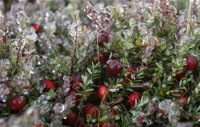
Cool weather may have actually saved some of the new crop that was at such an early growing stage that it wasn’t yet vulnerable to frost, said Doon Pauly, crop specialist for the government of the western province of Alberta. “It’s the equivalent to a frost in the second or third week of May,” Pauly said. “That’s the bright side.”
The downside of the cool weather is that it has left crops in general well behind schedule, he said. The Alberta canola crop is two to three weeks behind development, Pauly said, while the Canadian Wheat Board estimated on Monday that Western Canada wheat and barley crops are at least 10 days behind.
Fields with frost damage can develop bare pockets or a thinned-down plant population that gives weeds more room to grow, said Pauly, adding that some Alberta areas reported frost as recently as Tuesday morning.
But despite frosts and cool weather, it’s too early to say if canola yields will suffer, he said. “Canola is so plastic. If the remainder of June we get good moisture and reasonable heat, the yields can recover.” Read more here.
Jun 09, 2009
Atlantic Seasonal Hurricane Activity and Landfall Strike Probability for 2009
By Philip J. Klotzbach and William M. Gray
Information obtained through May 2009 indicates that the 2009 Atlantic hurricane season will be slightly less active than the average 1950-2000 season. We estimate that 2009 will have about 5 hurricanes (average is 5.9), 11 named storms (average is 9.6), 50 named storm days (average is 49.1), 20 hurricane days (average is 24.5), 2 major (Category 3-4-5) hurricanes (average is 2.3) and 4 major hurricane days (average is 5.0). The probability of U.S. major hurricane landfall and Caribbean major hurricane activity is estimated to be slightly below the long-period average. We expect Atlantic basin Net Tropical Cyclone (NTC) activity in 2009 to be approximately 90 percent of the long-term average. We have decreased our seasonal forecast from early April.
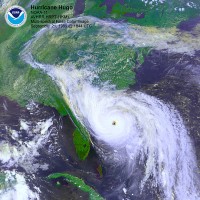
This forecast is based on an extended-range early June statistical prediction scheme that utilizes 58 years of past data. Analog predictors are also utilized. The influence of El Niņo conditions is implicit in these predictor fields, and therefore we do not utilize a specific ENSO forecast as a predictor.
We expect current neutral ENSO conditions to persist or perhaps transition to weak El Nino conditions by the most active portion of this year’s hurricane season (August-October). If El Nino conditions develop, it would tend to increase the levels of vertical wind shear and decrease the levels of Atlantic hurricane activity. Another reason for our forecast reduction is due to the persistence of anomalously cool sea surface temperatures in the tropical Atlantic. Cooler waters are associated with dynamic and thermodynamic factors that are less conducive for an active Atlantic hurricane season. Another factor in our forecast reduction is the stronger-than-normal Azores High during April-May. Stronger high pressure typically results in stronger trade winds that are commonly associated with less active hurricane seasons.
Although we have been in an active multi-decadal Atlantic Basin hurricane era since 1995, it is not unusual to have a few below-average years within an active multi-decadal period. Likewise, it is not unusual to have a few above-average years within an inactive multi-decadal period. We expect the active Atlantic hurricane era that we have been in since 1995 to continue for the next 10-15 years. See forecast here.
Jun 07, 2009
June Snows in California, North Dakota, Canada and Great Britain
Rain, snow and a rescue from cold: Hypothermic symptoms in child hikers
Modesto Bee
Unseasonably wet and cold weather Friday resulted in fender benders, heavy snow and a rescue effort for schoolchildren who got cold on a Tuolumne County hike. Medics treated four children after they suffered hypothermic symptoms while on a camping trip with their Napa Valley charter school in the Pinecrest Reservoir area, according to the Tuolumne County Sheriff’s Department.
Sheriff’s spokesman deputy Ken Diaz said the children were in triage at a fire station Friday afternoon. Diaz said the children, along with school officials and two hiking guides, were out hiking Friday morning when the students began showing symptoms of hypothermia. He said authorities used a boat to pick up the children and take them to the fire station.
The California Highway Patrol is advising drivers to behave “as you would if you were driving in December.” Chains are required on Highway 108 east of Strawberry, and the California Department of Transportation closed Tioga Pass on Friday because of snow.
June Snow in Dickinson, North Dakota!
KFYR-TV
Even though it was June 6, but this is North Dakota, so the snow fell hard in Dickinson Saturday morning. It`s the first time in nearly 60 years the city has seen snow past May. NBC North Dakota News reporter Andrew Keller took a few measurements, and by our unofficial count, it looks like some places may have received two inches of snow. It was only raining in Bismarck and Williston, but snow was possible by late in the night.
“Even though it was June 6, but this is North Dakota, so the snow fell hard in Dickinson Saturday morning. It’s the first time in nearly 60 years the city has seen snow past May. NBC North Dakota News reporter Andrew Keller took a few measurements, and by our unofficial count, it looks like some places may have received two inches of snow. It was only raining in Bismarck and Williston, but snow was possible by late in the night.”
To the north, this photo from June 6 from Calgary in Canada courtesy of Madhav Khandekar.
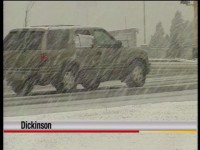
It’s June...so it must be snowing - from sweltering to shivering in one week
By Colin Fernandez, UK Daily Mail
Five days ago we were flocking to the beach, queueing for ice-creams and slathering on the sunscreen. Yesterday, we were shivering in summer’s first dusting of snow. Yes, snow. After the hottest spell of the year so far, sleet and snow swept in across northern parts of Britain while the rest of the country also cooled down considerably. The Cairngorms in Scotland were the chilliest, with temperatures falling to zero while the Pennines and Cumbrian fells managed a mere 3c (37f).
Even by British summer standards, that is a remarkable weather turnaround. In the Cairngorms, two inches of snow meant visitors were able to build a rather surprised- looking summer snowman. And in the Pennines, snow was clearly visible on peaks above 2,300ft. It was already a chilly day before heavy rain falling across the Cumbrian fells and the north Pennines helped to lower the temperature sufficiently for the rain to turn to sleet, and then to wet snow,’ said meteorologist Stephen Davenport from the Meteo Group weather forecasters.
>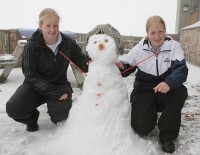
See more cold stories here.
Jun 07, 2009
Comment On Joe Romm’s Weblog On El Nino and Global Warming
By Roger Pielke Sr. Climate Science
Climate Progress has a weblog by Joseph Romm titled “Breaking: NOAA puts out “El Nino Watch,” so record temperatures are coming and this will be the hottest decade on record”.
This is an interesting and very bold forecast of record temperatures by Joe Romm, and, if this does occurs, it would substantially support his claims on the dominance of human-caused global warming. Only time will tell, of course, if this warming will occur. However, unfortunately, he still does not understand that i) the appropriate metric to monitor global warming involves heat in Joules, most which occurs in the oceans (e.g. see), and ii) that the accumulation Joules in the upper ocean has not occurred since 2003 (e.g. see and see).
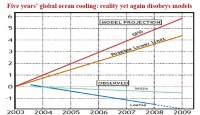
See larger chart here.
Even Jim Hansen agrees that the ocean is the dominant reservoir for heat accumulation (e. g. see).
In Joe Romm’s weblog, there is the text
“As a side note: Roger Pielke, Sr.’s “analysis” of how there supposedly hasn’t been measurable ocean warming from 2004 to 2008 is uber-lame. In the middle of a strong 50-year warming trend, any clever (but cynical) analyst can connect an El Nino-driven warm year to a La Nina-driven cool year a few years later to make it look like warming has stopped. In fact, the latest analysis shows “that ocean heat content has indeed been increasing in recent decades, just like the models said it should.
This text shows a failure to understand the physics of global warming and cooling. There are peer reviewed analyses that document that upper ocean warming has halted since 2003 (e.g. see and see). Even the last few years of the Levitus et al 2009 paper shows this lack of warming (see).
Joe Romm, since he disagrees with this, should present other observational analyses of the continued accumulation of heat content in Joules since 2003. He should also focus on this time period since the Argo network was established, as it is this data network which is providing us more accurate assessments of the heat content in the upper ocean than is found in the earlier data.
If he continues to use the global average surface temperature trends as the metric for global warming, he will convince us that he does not recognize i) that surface temperature, by itself, is not a meaasure of heat (e.g. see), and ii) that there are major remaining uncertainties and biases with the surface temperature data set (e.g. see, see and see).
He writes: “In the middle of a strong 50-year warming trend, any clever (but cynical) analyst can connect an El Nino-driven warm year to a La Nina-driven cool year a few years later to make it look like warming has stopped.”
He ignores that since 2003, global warming (the accumulation of Joules) has stopped. An objective scientist [as opposed to a “clever (but cynical) analyst"] would report this scientific observation. He would find more appreciation and respect for his viewpoints if he properly presented the actual observational finding, and discussed its implications as to where we are with respect to the accumulation of Joules over time. I have proposed such an approach in my weblogs here and here.
As usual Roger makes a strong case with a heavy dose of peer review. Romm’s case is weak. Notice Romm refers to a 50 year strong warming. Where? Even the contaminated global and USHCN data bases had a cooling or stasis from the 1940s to 1970s and again the last decade all while CO2 allegedly rose. That leaves only the 1979-1998 period that showed warming.
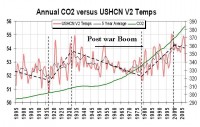
See larger graph here.
You notice Romm mentioned La Nina and El Nino but not PDO. That is because to admit to the PDO would be game, set and match for the climate realist case versus the alarmists as the PDO was warm during those 20 years and when the PDO is warm El Ninos dominate with accompanying warming. We had three times as many El Ninos as La Ninas those 20 years. Romm’s hyperactivity in recent days is a sign the end is near for the climate warming scam as predicted by Leon Festinger in When Prophecies Fail. Read 2008 story on that here.
|









